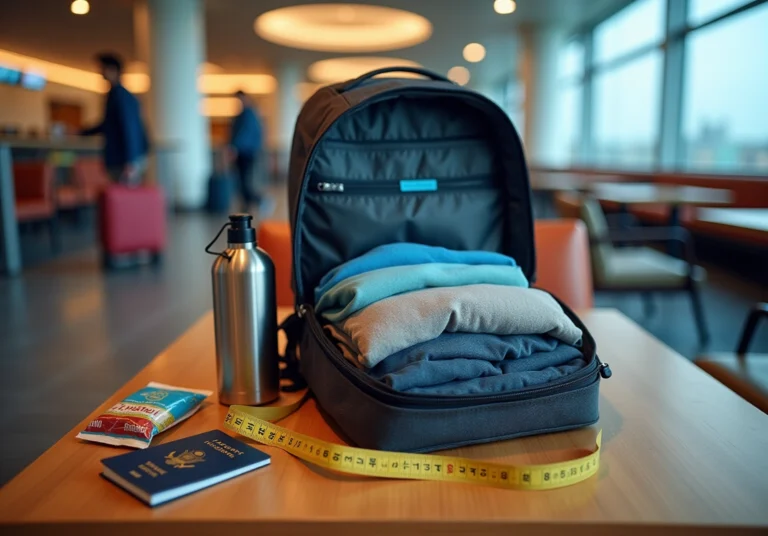Overview
When it comes to choosing the perfect backpack carry-on luggage, there are some essential tips you won’t want to miss!
- First off, understanding airline size restrictions is key—this ensures your bag fits snugly in the overhead compartment or under the seat.
- Next, consider selecting durable materials; I’ve found that ballistic nylon holds up beautifully against wear and tear!
- Don’t forget about incorporating organizational features. Look for bags with multiple compartments and external pockets; these little gems can make all the difference in keeping your travel essentials easy to access.
- And speaking of packing, implementing practical strategies can really enhance your travel experience.
This article dives deeper into specific dimensions and material recommendations, all aimed at boosting your travel efficiency and comfort. So, are you ready to embark on your next adventure with the right carry-on? Let’s get packing!
Key Highlights:
- Standard carry-on backpack dimensions are typically around 22 x 14 x 9 inches; measure your bag to ensure it fits these specifications.
- Different airlines may have varying size restrictions; always cheque specific airline policies before travelling.
- Assess both external dimensions and internal capacity to maximise space within carry-on limits.
- Consider versatile backpacks that can serve multiple purposes, such as a daypack for outings.
- Durable materials like ballistic nylon and ripstop fabric enhance bag longevity and performance.
- Look for water-resistant coatings to protect belongings from rain; understand the technology behind these coatings.
- Eco-friendly options made from recycled materials are increasingly available and popular among consumers.
- Organisational features like multiple compartments and packing cubes improve packing efficiency and accessibility.
- External pockets are beneficial for easy access to essentials like passports and snacks.
- A padded laptop sleeve is vital for protecting electronics during travel.
- Pack heavier items close to your back for better weight distribution and comfort.
- Utilise compression bags to save space and keep clothing organised.
- Store frequently needed items in accessible pockets for convenience during flights.
- Adjust backpack straps for comfort to prevent strain during long travel days.
Introduction
Choosing the right carry-on backpack can truly elevate your travel experience! Yet, it’s surprising how many travelers overlook essential factors that can make a journey seamless. In this article, I’m excited to share four crucial tips that will help you choose the perfect backpack for your adventures. We’ll focus on:
- Optimal size
- Durability
- Organization
- Practical usage strategies
With so many options out there, you might wonder: how do you navigate the complexities of size regulations, material choices, and organizational features? Let’s dive in and avoid common pitfalls together, so you can make the most of your travel escapades!
Determine Optimal Size and Dimensions for Carry-On Backpacks
When you’re choosing backpack carry-on luggage, it’s super important to know the standard dimensions that most airlines accept—typically around 22 x 14 x 9 inches. To make sure your backpack fits these requirements, here are some handy tips:
- Measure Your Bag: Before you buy, grab a measuring tape and check the bag’s dimensions, including handles and wheels. You want to ensure it meets those airline specifications!
- Check Airline Policies: Remember, different airlines might have different size restrictions. Always double-check the specific requirements for backpack carry-on luggage with the airline you’re flying with.
- Consider Internal Capacity: While those external dimensions are key, don’t forget to assess the internal capacity too! A well-crafted backpack carry-on luggage can help you maximize space without exceeding those size limits.
- Opt for Versatility: Look for a bag that can do double duty, like a daypack for outings. This way, you can really make the most of your journey!
By following these guidelines, you can dodge the hassle of checking bags and enjoy a smoother travel experience. Happy travels!
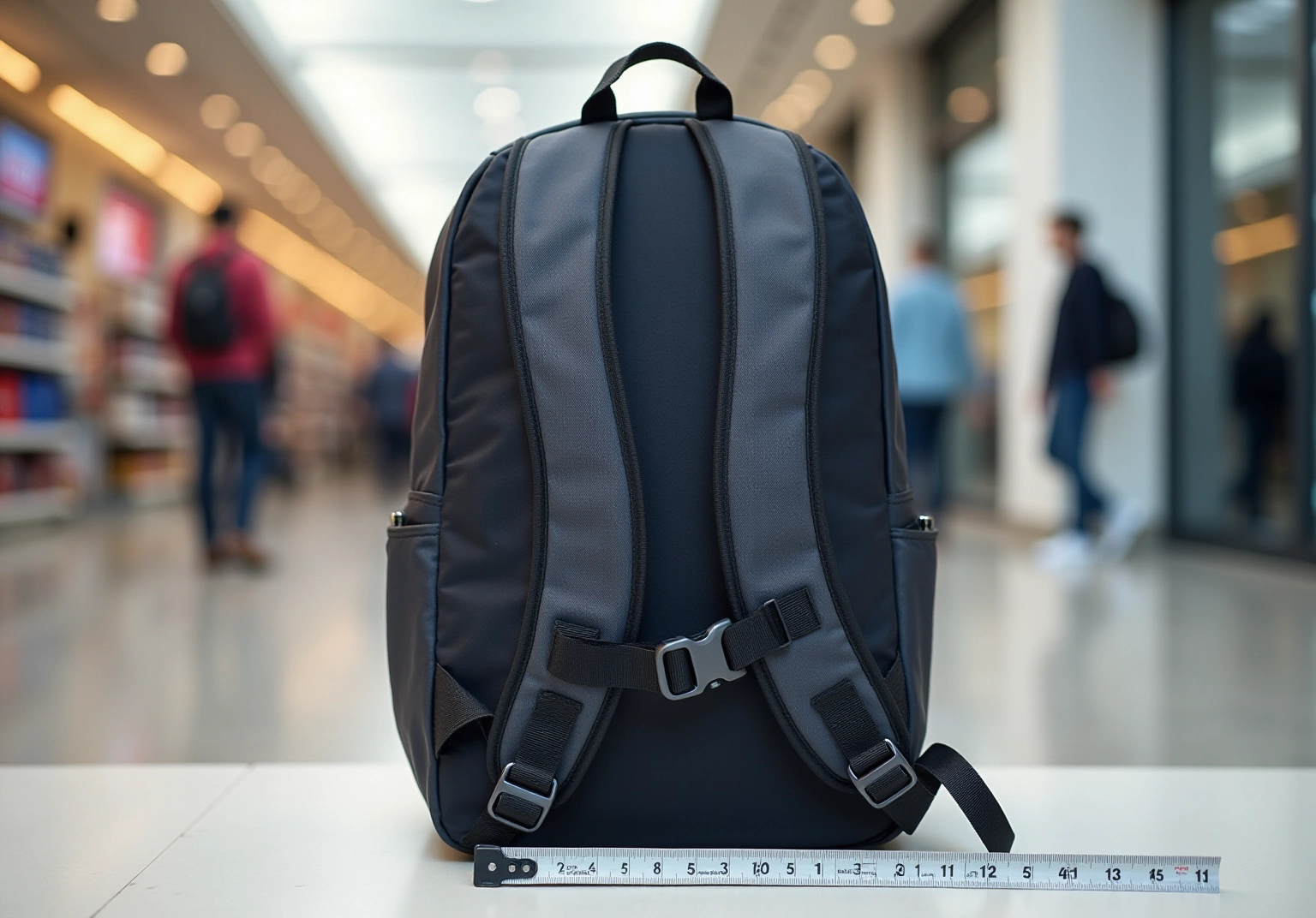
Select Durable Materials for Longevity and Performance
Choosing the right items for your carry-on bag is key to ensuring it lasts and works well for you! Let’s dive into some fantastic materials you might want to consider:
-
Ballistic Nylon: This material is a traveler’s best friend! Known for its durability and resistance to abrasions, ballistic nylon is perfect for those who need a sturdy bag. Did you know that the worldwide bag market is expected to grow from $20.56 billion in 2024 to $21.74 billion in 2025? That just shows how much people are looking for quality materials like ballistic nylon!
-
Ripstop Fabric: If you’re looking for something lightweight, ripstop fabric is a great option. It’s reinforced to prevent tearing and ripping, making it ideal for all your adventures. Plus, its unique grid design adds to its longevity, ensuring your bag can handle the wear and tear of frequent travel.
-
Water-Resistant Coatings: Make sure to look for backpack carry-on luggage that has water-resistant or waterproof coatings to keep your belongings safe from unexpected rain showers. Just remember, not all water-resistant coatings are created equal! Understanding the specific technology behind them can help you make the best choice for your needs.
-
Recycled Resources: Why not consider eco-friendly options made from recycled materials? They’re becoming increasingly popular and offer durability without compromising sustainability. As more consumers seek out eco-friendly products, brands are stepping up by incorporating sustainable resources into their designs.
By choosing a bag made from quality materials, you can ensure that your luggage stands up to the rigors of travel. Plus, opting for sturdy materials not only enhances durability but also boosts the efficiency of your bag, leading to a superior travel experience!
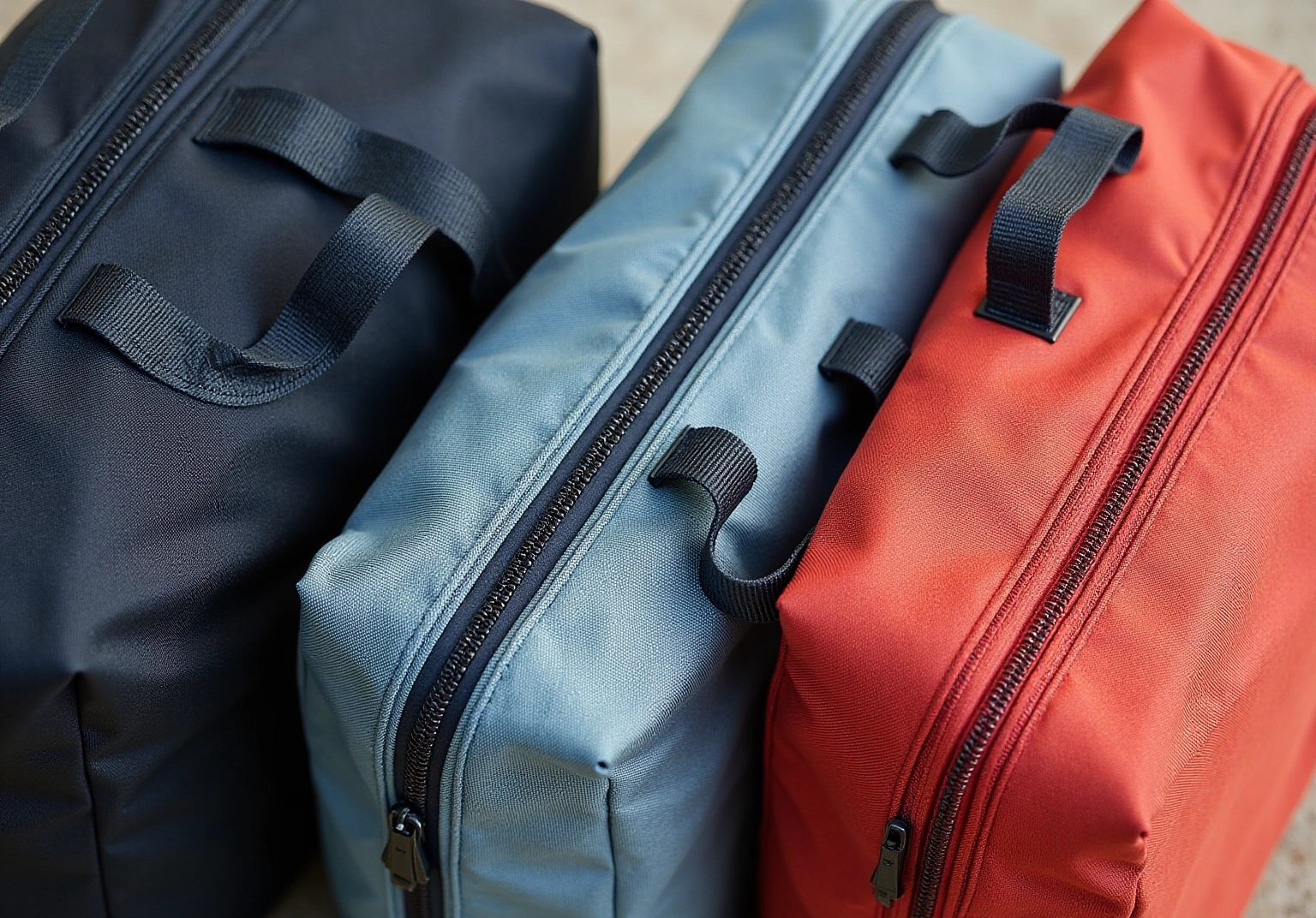
Incorporate Organizational Features for Efficient Packing
A well-organized backpack carry-on luggage can truly elevate your travel experience! Let’s explore some essential features that can make a difference:
- Multiple Compartments: Look for bags with various compartments to keep your clothing, electronics, and personal items neatly separated. This thoughtful design allows for quick access to your essentials, saving you time when you need to find something. For example, the Nomatic Travel Pack is a favorite among tech-savvy travelers because it functions well as backpack carry-on luggage, offering smart organization and multiple pockets. The Away Large Featherlight bag, weighing just 1.2 lb and measuring 16.5″ x 11.8″ x 5.9″, is an excellent choice for backpack carry-on luggage, as it also boasts several compartments that enhance accessibility during your travels.
- Packing Cubes: Consider using packing cubes within your bag to maintain organization and compactness, optimizing your space. These handy cubes let you categorize your items, making it a breeze to find what you need without unpacking everything. For 2025, the Bagsmart packing cubes are popular choices, designed to fit seamlessly into most bags.
- External Pockets: A bag with external pockets is a game changer! It offers easy access to essentials like your passport, tickets, and snacks, so you won’t have to dig through the main compartment. The Away Large Featherlight bag shines here too, featuring several external compartments that improve accessibility while you’re on the go.
- Laptop Sleeve: If you’re traveling with electronics, a padded laptop sleeve is a must for protection and quick access. Backpacks, such as the Dagne Dover Dakota Backpack, function as excellent backpack carry-on luggage, equipped with dedicated laptop compartments that keep your devices secure yet easily reachable. As traveler contributor Hannah Towey puts it, “My ideal bag has tons of interior pockets hidden neatly behind a sleek, simple exterior.” This bag truly has a pocket for everything!
Integrating these features not only simplifies your packing process but also enhances your overall travel experience, allowing you to focus on enjoying your adventure!
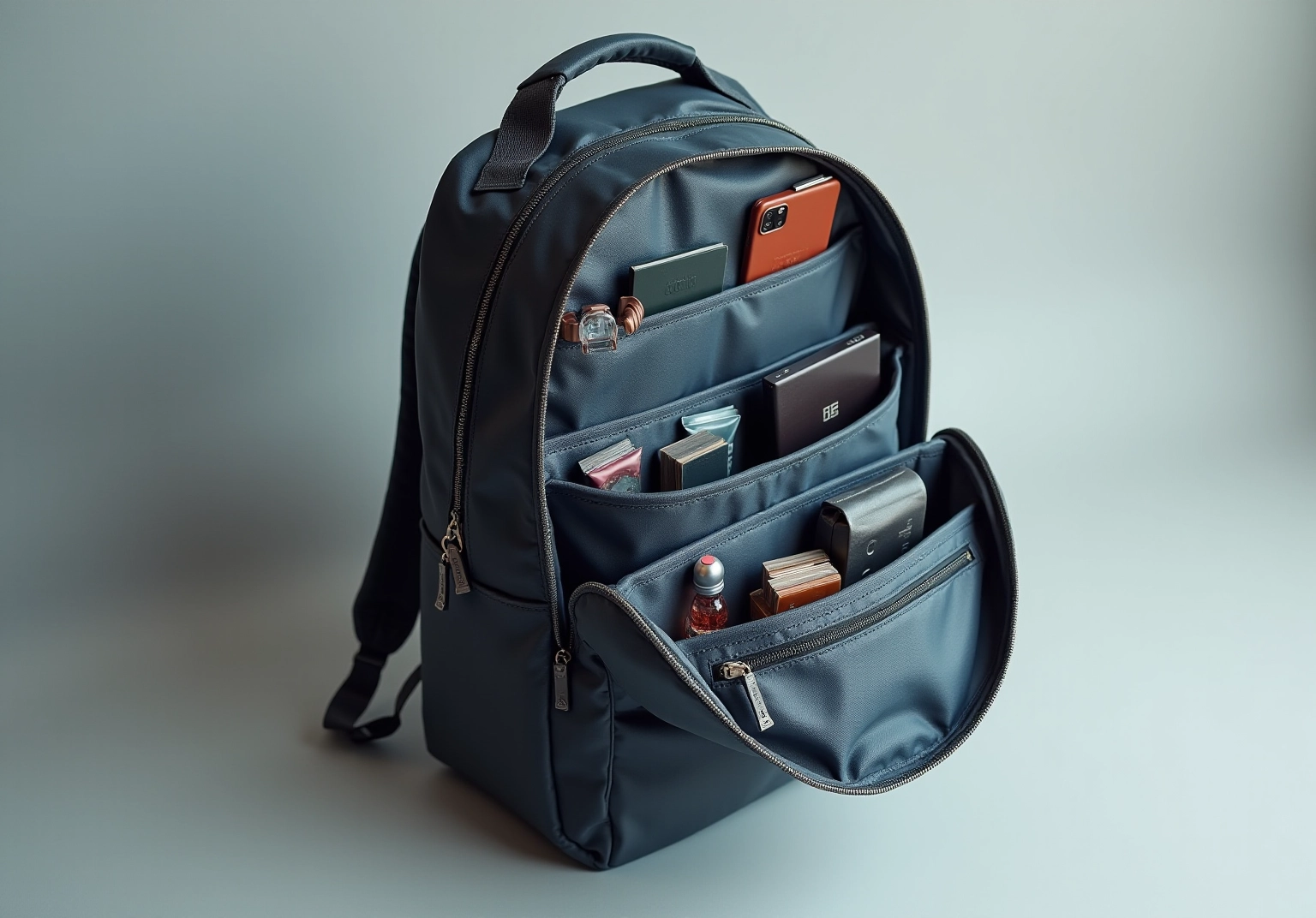
Implement Practical Strategies for Using Your Backpack During Travel
To make the most of your carry-on backpack during travel, let’s explore some practical strategies together!
- Pack Smart: Think about placing heavier items closer to your back. This not only helps with weight distribution but also reduces strain on your shoulders. Ideally, your carry-on luggage should weigh between 8 and 12 kg, depending on your class of service. This way, you’ll stay comfortable and meet airline regulations.
- Utilize Compression Bags: These handy tools can save space and keep your clothing organized. You’ll be amazed at how much more you can fit into your bag without exceeding size limits! Plus, rolling your clothes can help prevent wrinkles and maximize space.
- Keep Essentials Accessible: Make sure to store items you might need during the flight—like snacks, a water bottle, and entertainment—in easily accessible pockets. This little tip can really simplify your journey and ensure you have everything at hand when you need it.
- Adjust Straps for Comfort: Don’t forget to adjust the bag straps! Properly adjusting them helps distribute weight evenly, preventing discomfort during those long travel days. As travel expert Karolina Lesicka wisely notes, “It’s worth putting an extra pair of shoes at the bottom of the backpack.” This really emphasizes the importance of thoughtful packing.
By implementing these strategies, you can enhance your comfort and efficiency while navigating through airports and enjoying your journeys. Happy travels!
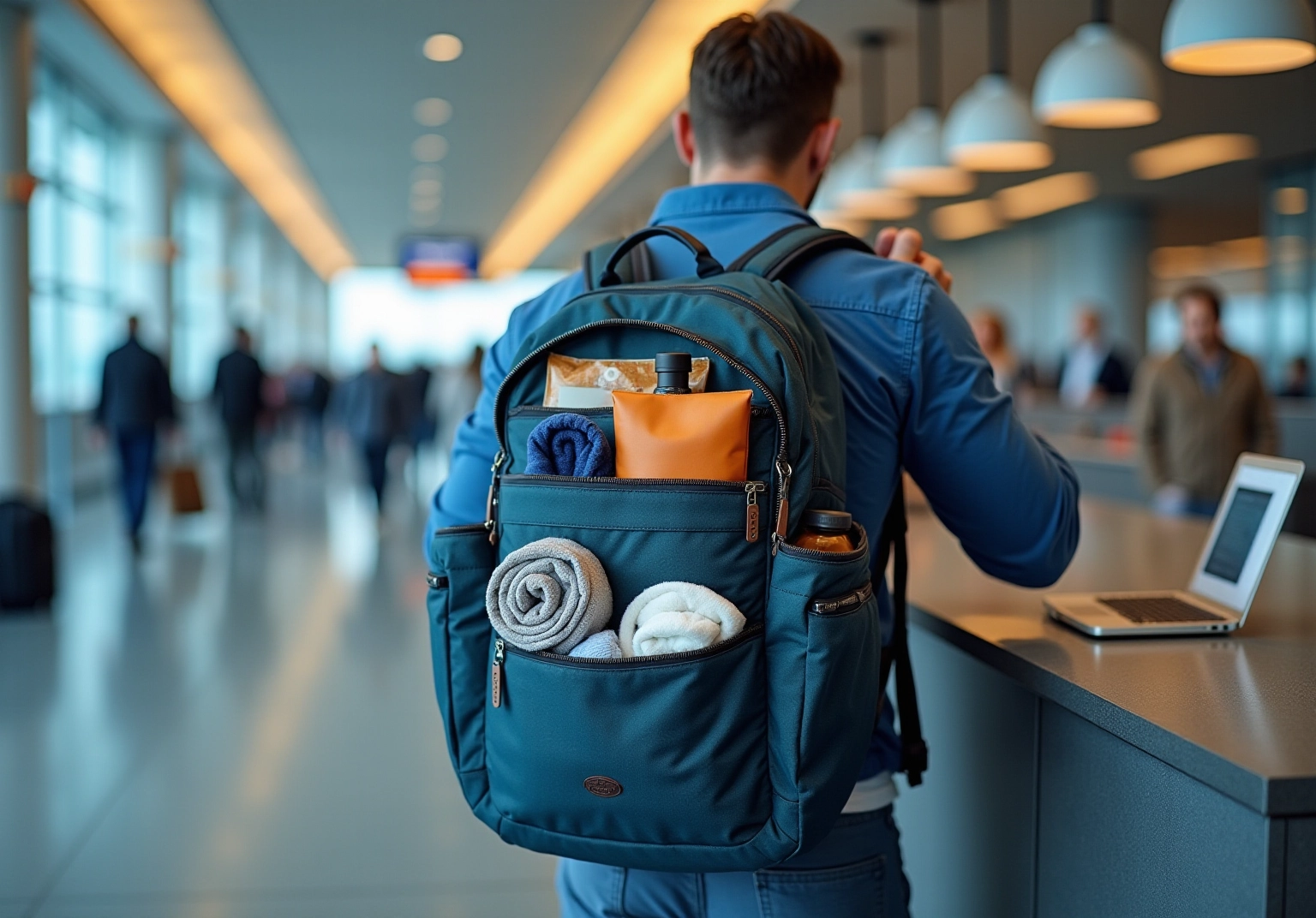
Conclusion
Choosing the right backpack carry-on luggage can truly enhance your travel experience, making your journey both convenient and efficient. By understanding the optimal size, selecting durable materials, incorporating organizational features, and implementing practical strategies, you can navigate airports with ease and maximize your packing capabilities.
Key insights from this article highlight the importance of:
- Sticking to airline size regulations
- Opting for robust materials like ballistic nylon and ripstop fabric
- Utilizing compartments and packing cubes for better organization
Plus, practical strategies such as smart packing techniques and adjusting bag straps can lead to a more comfortable travel experience!
Incorporating these essential tips not only simplifies the packing process but also empowers you to enjoy your adventures without unnecessary stress. Embracing these practices will lead to smoother travels and a more enjoyable journey, making it clear that the right carry-on backpack is an invaluable asset for any traveler like you!
Frequently Asked Questions
What are the standard dimensions for carry-on backpacks accepted by most airlines?
The standard dimensions for carry-on backpacks are typically around 22 x 14 x 9 inches.
How can I ensure my backpack fits airline carry-on requirements?
To ensure your backpack fits, measure the bag’s dimensions, including handles and wheels, using a measuring tape before purchasing.
Why is it important to check airline policies regarding carry-on luggage?
It’s important because different airlines may have varying size restrictions for carry-on luggage, so you should always verify the specific requirements for the airline you are flying with.
What should I consider about the internal capacity of a carry-on backpack?
While external dimensions are important, assessing the internal capacity is also crucial, as a well-crafted backpack can help maximize space without exceeding size limits.
What features should I look for in a versatile carry-on backpack?
Look for a bag that can serve multiple purposes, such as functioning as a daypack for outings, to make the most of your travel experience.









